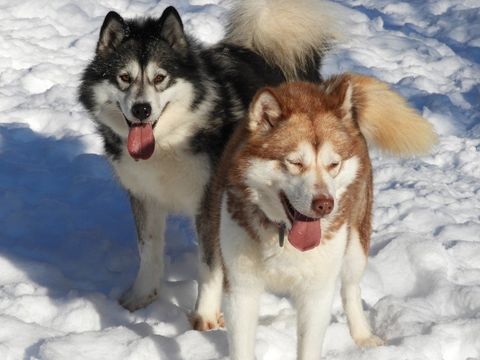Larquoia Kennels

Home of the Indigenous and Majestic Canadian Eskimo Dog
RR#2, Huntsville ON P1H 2J3, CANADA +1 705 788 9169
EMAIL: larquoiakennels@gmail.com
CARE
Canadian Eskimo Dog Care
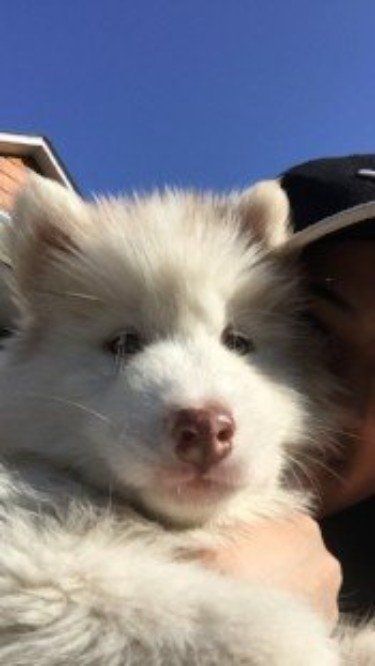
LARQUOIA KENNELS as owners of these beautiful creatures takes pride in caring for them.
The intent of this page is primarily to give those who may be considering ownership of one of these beautiful creatures, some insight as to what is actually required of the owner of a Canadian Eskimo Dog in order for their dog to receive the best possible care as well as creating an enjoyable, lifelong bond with their new companion
Canadian Eskimo Dog Housing
One of the first considerations is the type of domain needed to properly accommodate a CED. Kennel runs, complete with a well-ventilated doghouse and / or some other form of shading and protection from the elements would be adequate, if the dog is to remain outdoors. Many owners add straw to the sleeping area during the winter season for additional warmth. For the dog that is allowed into the house, it is suggested that a crate be available for him to sleep in, as their natural instinct is to find a den or cave-like structure for shelter, and it will also keep him out of trouble while the owner is away.
Chaining is an alternative solution, but not necessarily recommended as each chain link must be inspected and replaced regularly to ensure that breakage does not occur. A large "running yard" should also be available, even if the dog is confined in a kennel because of their high energy level and their need to run and play. A chain link fence, at least six feet in height is a minimum requirement as these dogs have extremely powerful legs and are capable of jumping over anything less than this. The fence should also be buried into the ground (or a sub fence placed into the ground first) slightly to prevent escape.
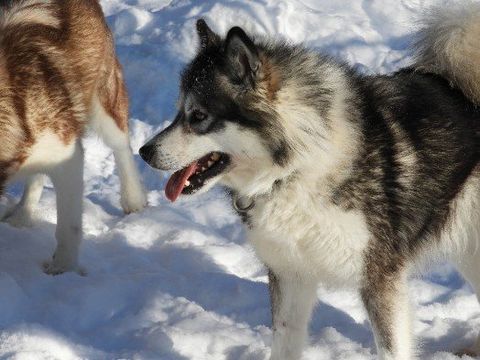
Canadian Eskimo Dog Diet
CEDs
have somewhat different diet requirements than other canine breeds. Their natural environment has never contained an abundance of vegetation therefore their metabolism is unable to successfully digest grains and other vegetable matter commonly found in most commercial dog foods.
Natural diets, including homemade concoctions, as well as high quality commercial foods have been found to be the most easily digested while still providing the needed nutrients to keep the dogs in peak health. Foods containing beet pulp and wheat middlings should be avoided. Meat is also an extremely important food source that should be included with every meal. Fresh water must be readily available at all times.
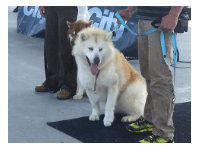
Canadian Eskimo Dog Health and Hygiene
Health and Hygiene
The CED's basic health needs are easily met by providing nutritious food, proper grooming, annual visits to the veterinarian, vaccinations, and lots of exercise.
Brushing should be done once a week to help stimulate new hair growth, and once a day when the CED is shedding. Traditionally, the moulting period was an annual event generally occurring during the autumn, however, dogs living in warmer climates have adapted to the higher temperatures, and now tend to blow their coat in the spring and again in the fall. Brushing helps to distribute the natural oils that the dog produces as a natural defence against water penetration which, in their natural environment, could have caused death almost instantaneously. Because of the oils, which also keep the skin healthy, bathing is done infrequently.
Raw bones are given occasionally to provide calcium and other nutrients, but also to help promote good dental health.
Veterinarians play a vital role in keeping a CED healthy. Maintaining optimum health of these dogs is of utmost importance as there is still so few dogs that to lose a portion of the current breed population / gene pool to a preventable illness would severely jeopardize the future of the breed. The CED does not have a highly developed immune system as the disease-causing micro-organisms that are common in most areas are not capable of surviving in the extremely cold environment of the arctic, therefore annual vaccinations are highly recommended (and in some instances, required by law)
Canadian Eskimo Dog Training
Training
There are two types of training that are considered absolutely necessary for CEDs to enable them to mature into happy, well-adjusted animals, which are a pleasure to be around.
The first and absolutely the most important is socialization. This begins as soon as the puppy is able to get up and play with its siblings. After the puppy receives its' vaccinations it should be introduced to all kinds of sounds, people, and places.
The second type is obedience training. CEDs are similar to wolves in the fact that their nature is to be part of a pack in which there is a hierarchy. Families in which there is only dog will still be considered a pack, the pack being the human counterparts. The humans must become the "alpha" dogs of the pack, showing the dog what is and is not acceptable behaviour. A dog that is not necessarily dominant in nature will assume the leadership position if the humans do not so that it can maintain some sort of order. This will result in an unruly, uncontrollable animal. Positive re-enforcement and encouragement are the preferred training methods for training this type of canine as it builds trust between the dog and the owner - something very important to the CED.
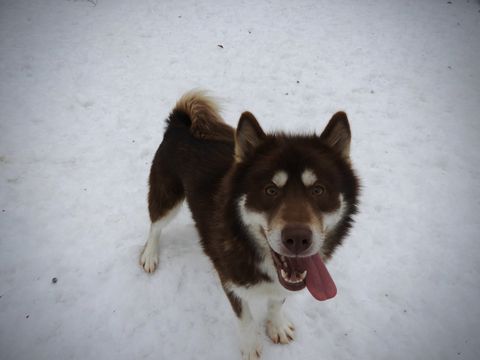
Webmaster ©:2016 Alliance International Marketing. All rights reserved
